Have you ever wanted to learn how to start a vegetable garden, but don’t know where to start?
Would you like to start a garden in an as easy, inexpensive and hassle-free way as possible?
After countless hours of research, personal experiences, and collaboration with experts I have compiled the Ultimate Guide to Starting a Vegetable Garden.
[toc]
This guide has everything needed for beginner gardeners to start a vegetable garden. It is also the perfect guide for herb and fruit gardens.
In addition, this will provide gardeners with all the resources, instructions, and tools needed for success.
How to Start a Vegetable Garden
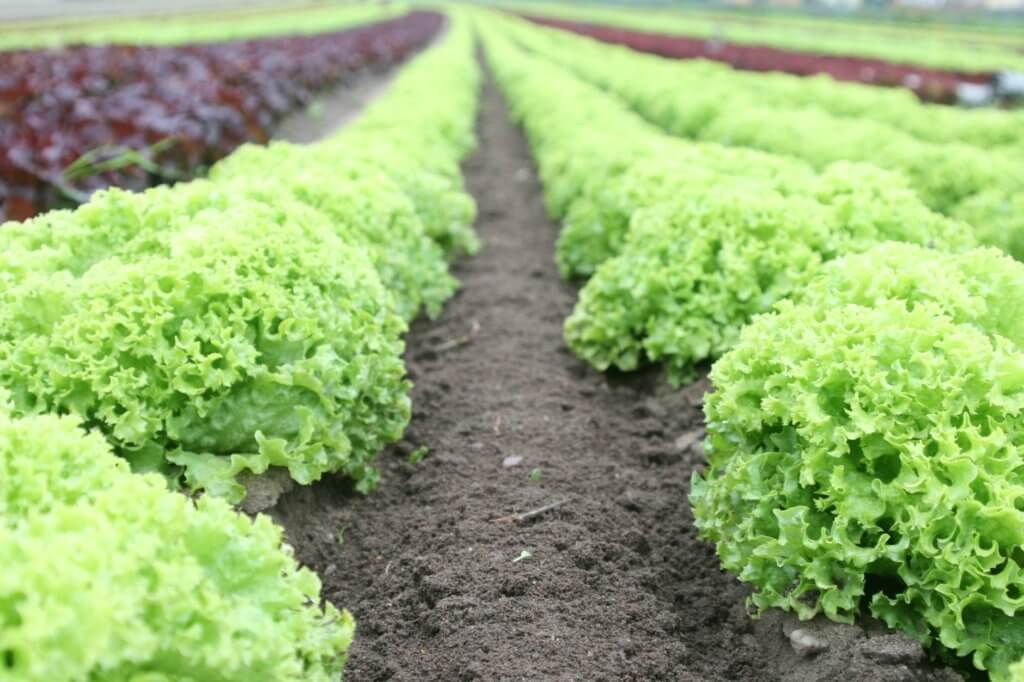
When you think about starting a vegetable garden you most likely get excited and overwhelmed all at once.
What do you plant? Where do you plant it? How do you even plant vegetables? Or care for them? How do you know when they are ready to harvest?
These are just some of the many questions I will answer in the Ultimate Guide to Starting a Vegetable Garden.
Step 1 – What Size Garden?
If you are interested in starting a vegetable garden the first question you must answer is what size garden do you want?
The size of your garden will depend on several factors.
- The size of your land
- The amount of initial work you want to do
- The amount of maintenance work you are willing to do
The Size of Your Land
If you have at least 1/4 of an acre of land then a traditional garden may be for you. The bigger your property the more ways you can be creative and productive with it.
If you have under 1/4 of an acre of land or if you do not want to cultivate or “tear” up your grass then I recommend building a raised garden bed.
If you want the easiest way to build a raised garden bed at the most affordable price then I recommend reading my article:
20 Best Raised Garden Beds for ALL Plants (2019)
If you live in an urban area, do not have much land, or do not want the hassle of gardening then I recommend pots for your vegetables.
Typically, you will want a 5 gallon to 10-gallon pot or window box. Any of these Pots are great choices.
If you want to learn more about growing plants in pots then I recommend reading my article:
20 EASY Vegetables to Grow in Pots for Beginners
The Amount of Initial Work You Want To Do
If you want the least amount of initial work to starting a vegetable garden, then I recommend using Pots. All you have to do with pots is fill it with soil, add your plant, and water it.
Overall, pots will also be the cheapest, most practical, and easiest way to garden.
If you are interested in gardening in a larger space but don’t want the work of a garden then use a raised garden bed. You will need to spend several hours building the raised garden bed kit, filling it with soil, planting the vegetables, and watering.
This is a simple way to garden. It is also fairly inexpensive. And is very practical for almost all gardeners.
If you don’t mind putting in the initial work, then a traditional garden is your best option. It will give you the most gardening options, best crop production, and is the best way to diversify.
The traditional garden will tend to be more expensive. It requires you to cultivate or till the soil and set up vegetable rows. And it typically requires fencing to protect the vegetables.
The Amount of Maintenance Work You Are Willing To Do
If you are looking for the least amount of maintenance work to starting a vegetable garden then you will want to use Pots. The only maintenance required with pots is to water your plants weekly.
Raised Garden Beds will require watering, light fertilization, and minimal weeding. The one major advantage is you will not have to cultivate it yearly like a traditional garden.
Traditional gardens require the most amount of maintenance. Yearly, you will need to till the garden. Also, you will need to fertilize or apply compost. And you will want to rotate where you plant your vegetables.
To learn more about composting, I recommend reading my article:
What to Compost: 9 Best Foods to Compost (and 10 You Shouldn’t)
Step 2 – What Vegetables Do You Want to Grow
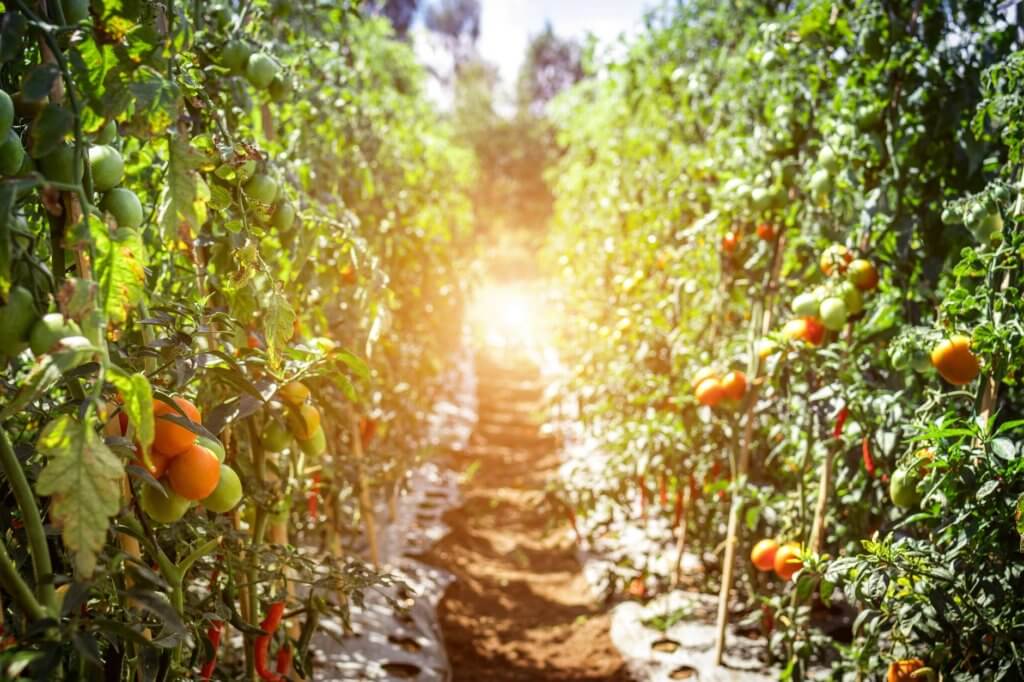
After deciding what type of garden you want the next step is to decide what vegetables to grow.
Very simply the more vegetables you want to grow the bigger space you will need.
If you are interested in growing vegetables to have them with a meal weekly then pots and raised garden beds are perfect.
Typically herbs are great for pots. Also, 3 to 5 different types of smaller vegetables are great for one container. Or one large vegetable can fit in a container.
Herbs are also great for raised garden beds. You can also plant as many varieties of vegetables as you want in raised garden beds. Larger spreading plants like squash, corn, cucumbers, melons, etc. are not a good fit for raised garden beds.
On the other hand, if you want to feed your family or sell your vegetables, then you MUST have a traditional garden. Traditional gardens are also perfect for bigger vegetables, herbs, and even fruit plants.
Depth, Spacing, and Sunlight
In addition to deciding how many vegetables you want to grow, it is also critical to have an understanding of what can practically fit in your pots, raised garden beds, or traditional garden.
It is also essential to have an understanding of how much direct sunlight vegetables need to effectively grow and bear “fruit”.
Below, is a chart that details the depth, spacing, and sunlight needed for common vegetables, herbs, and fruits.
*Please note if a plant requires more than 12 inches of depth or 18 inches of spacing then you will either need at least 10-gallon pots or you will want to plant it in a raised garden bed or traditional garden.
Vegetable Depth and Spacing Requirement
12 Inches deep by 12 inches of spacing
- Arugula, Broccoli, Brussel Sprouts, Bok Choy, Cabbage, Cauliflower, Celery, Chives, Collard Greens, Corn, Kale, Kohlrabi, Leeks, Lettuce, Onions, Potatoes, Radishes, Scallions, Shallots, Spinach
18 inches deep by 18 inches of spacing
- Beans, Beets, Carrots, Chard, Cucumbers, Eggplant, Peas, Peppers, Squash, Turnips
24 inches deep by 24 inches of spacing
- Artichokes, Asparagus, Okra, Parsnips, Pumpkins, Rhubarb, Sweet Potatoes, Tomatoes.
Herb Depth and Spacing Requirement
12 inches deep by 12 inches of spacing
- Basil, Cilantro, Fennel, Garlic, Ginger, Mint, Mustard, Oregano, Parsley, Thyme
18 inches deep by 18 inches of spacing
- Rosemary, Lavender, Sage
Fruit Depth and Spacing Requirements
12 inches deep by 12 inches of spacing
- Strawberries, blueberries, blackberries
18 inches deep by 18 inches of spacing
- Cantaloupes
24 inches deep by 24 inches of spacing
- Watermelon, Cherry Bushes, Fig bushes
Partial Sunlight Plants
- Arugula, Broccoli, Brussel Sprouts, Bok Choy, Cabbage, Cauliflower, Celery, Chives, Collard Greens, Kale, Kohlrabi, Leeks, Lettuce, Onions, Radish, Scallions, Shallots, Spinach, Beets, Chard, Turnips, Artichokes, Parsnips, Basil, Cilantro, Fennel, Garlic, Ginger, Mint, Mustard, Oregano, Parsley, Thyme, Rosemary, Lavender, Sage
Full Sunlights Plants
- Corn, Potatoes, Beans, Carrots, Cucumbers, Eggplant, Peas, Peppers, Squash, Asparagus, Okra, Pumpkins, Rhubarb, Tomatoes, Strawberry, Blueberry, Blackberry, Cantaloupes, Watermelon, Cherry Bushes, Fig Bushes
Step 3 – Purchase the Correct Tools
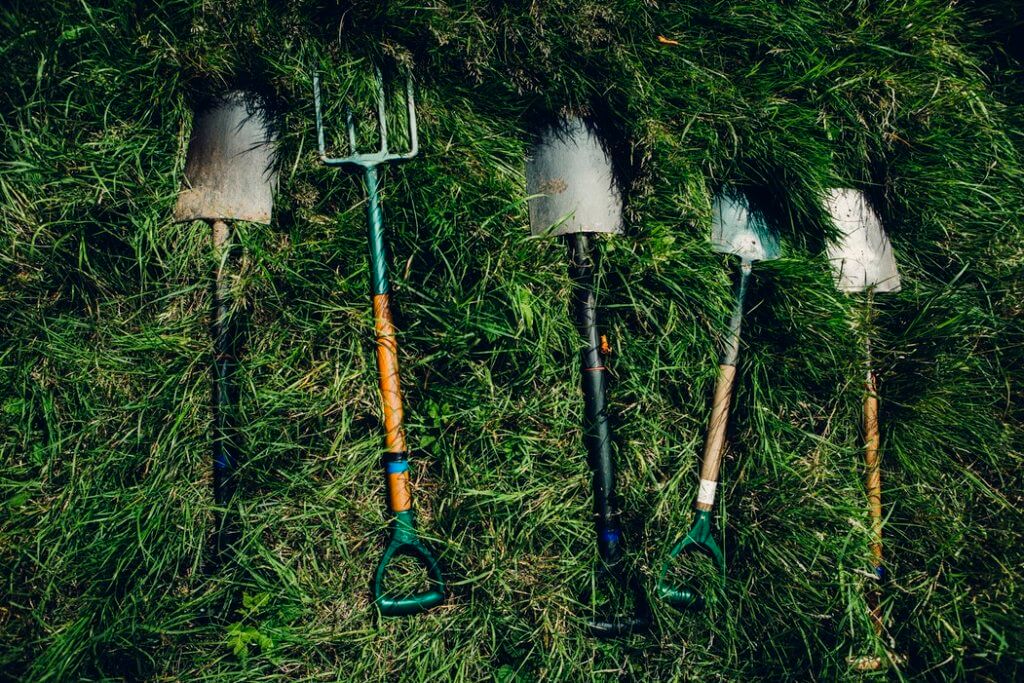
Before we begin a step-by-step guide for planting vegetables it is important to understand what tools are needed.
I have listed below essential tools and those that are beneficial but not required for starting a vegetable garden.
Essential Tools
- Hand Shovel – Hand shovels are essentials for digging holes for your plants. You can try digging without a shovel, but you won’t get very far.
- Garden Hose or Watering Can -Unless you live in an area that gets consistent rain, you’ll need a hose or watering can.
- Fence – I don’t know of one gardener that doesn’t NEED a fence to protect their plants from deer, rabbits, and other pests.
- Tape Measure – This is essential for measuring depth and spacing for your vegetables.
Beneficial Tools
- Gloves – While not essential, gloves are a great way to protect your hands from dirt, thorns, and other agitations.
- Tiller – Depending on the gardening technique you use a Tiller can be beneficial. If you have a traditional garden then a Tiller is definitely an essential tool.
- Fertilizer – While fertilizing your vegetables will help growth, it is not critical for your plants to grow vegetables.
- Stakes – Stakes are a great way to support plant growth. Without them, there is a chance that tomatoes or pepper plants can snap in half.
- Composter – If you want to naturally enrich your garden then use a composter!
- Hoe – This is a great way to create lines in your garden and removes weeds.
Step 4- Easy Guide for Planting
Once you determine the type of vegetables you want to grow it is time to plant. Depending on what technique you use for planting each step-by-step guide will be slightly different.
Step-by-Step Guide for Planting Vegetables in Pots
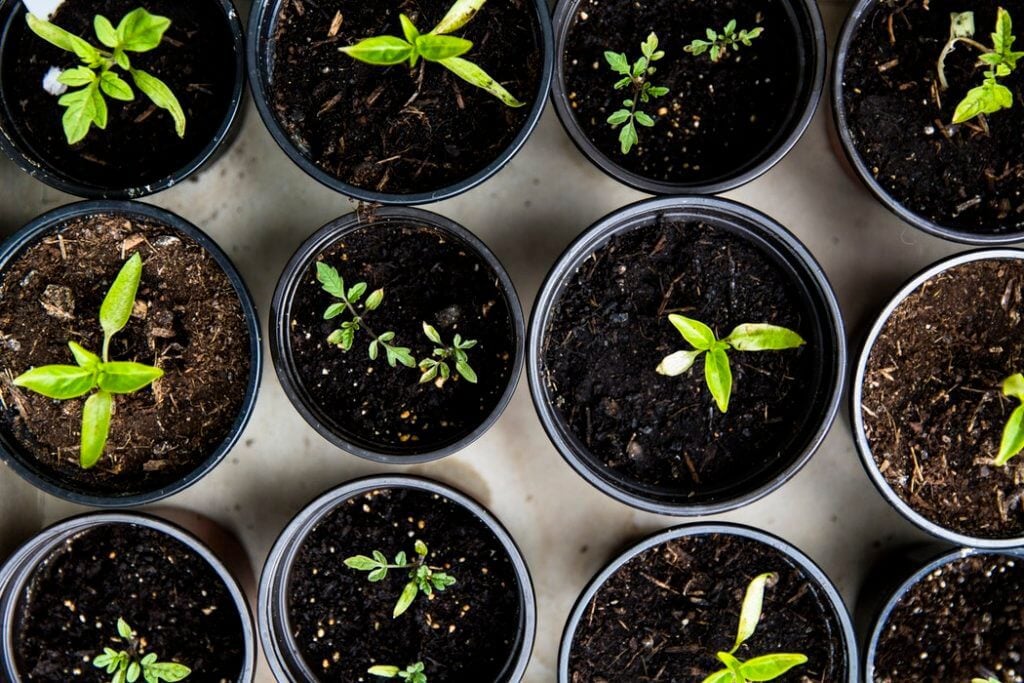
Planting Vegetables in pots is extremely easy.
You will want to plant your vegetables after the last frost date. This helps prevent them from dying. Read the instructions on your vegetable label to determine exactly when to plant it.
To learn more about when your last frost date is I recommend using:
And if you want to learn more about when you should specifically plant a vegetable then please read my article:
20 EASY Vegetables to Grow in Pots for Beginners
Once you determine when to plant your vegetables, you will then place your pots in an area that gets direct sunlight or partial sunlight. Where you place it will depend on the vegetables you grow.
Next, you will fill your pot with gardening soil up to 3 inches from the top.
After you fill your pot you will then want to dig a hole for your plant. The depth and spacing will depend on the vegetable you grow.
Next, place the plant into the hole. Fill the hole with soil until it reaches the base of the plant.
The base is where the plant meets the soil it is already in. If it is not in the soil, then it is approximately 3 to 4 inches above the root ball (aka the bottom of the plant).
Please note that you never cover the plant above its leaves. This will kill the plant.
Immediately after planting your vegetable you will want to fertilize it. Follow the instructions on the fertilizer package. Then water it for 15 to 30 seconds.
It is as easy as that!
Step-by-Step Guide for Growing Vegetables in Raised Garden Beds
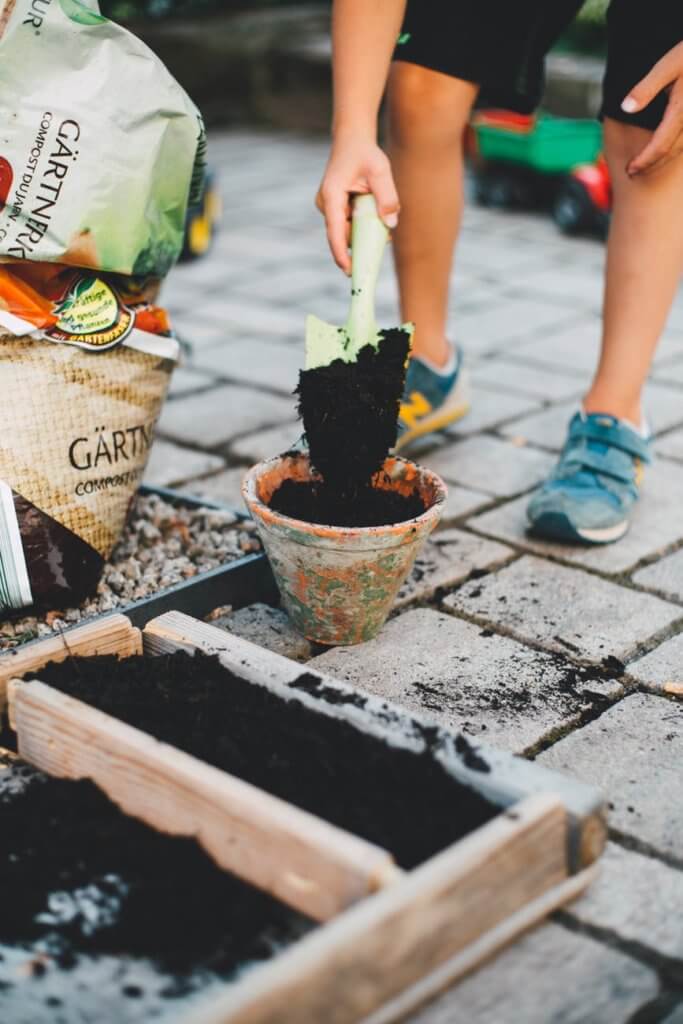
Planting vegetables in raised garden beds is relatively simple and easy if you follow my instructions.
Like growing vegetables in pots, you first need to identify what vegetables you will be growing. Next, you need to determine if they need partial or full sunlight.
You will then want to build your raised garden bed kit and fill it with raised garden bed soil.
My recommendation is: Scotts Raised Garden Bed Soil.
The amount of soil needed depends on how big your raised garden bed is.
If you want an exact amount then either contact me for specific instructions or use the following equation:
Amount of Raised Garden Bed Soil = Length of garden bed x Width of garden bed x height (depth) of garden bed).
After you fill your raised garden bed with soil you will follow the exact same steps as you do with starting a vegetable garden in a pot (as seen above).
The only main difference between gardening in pots and gardening in a raised garden bed is spacing.
Make sure you refer to Step 2 above to gain a better understanding of how far you should space your plants apart.
Step-by-Step Guide for Growing Vegetables in a Traditional Garden
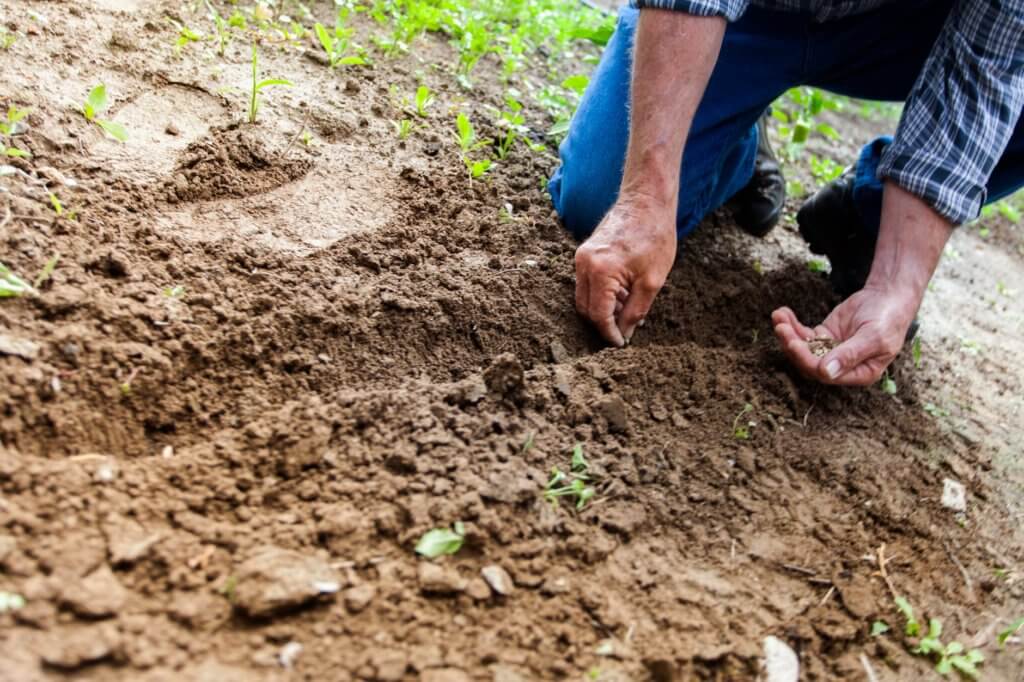
Planting a traditional garden takes the most planning and effort, but can yield the best harvest.
You first need to identify what vegetables you will be growing. You then need to determine if they need partial or full sunlight.
After, you will then want to place your garden in an area based on the sunlight needed for your plants.
You will also want to plant your traditional garden in an area that is away from trees, shrubs, and in an area that meets your need for size.
Next, you will want to cultivate or till your land to create a traditional garden.
Read more about the best tillers in my article:
5 Best Tillers for Gardening (2019)
After you cultivate your land, you will then want to place a fence around it.
*Use the fencing in the tools section above.
After setting up your fence, you will want to create a certain amount of rows for your vegetables. The number of rows will depend on how many plants you have and the square footage of your garden.
Whether you have 4 rows or 15 rows it doesn’t matter. You want to focus on what is right for YOU!
As described above, you will want to plant your vegetables after the last frost date.
After you cultivate (till) your land, you will follow the same steps as you do with starting a vegetable garden in a raised garden bed(as seen above).
Make sure you refer to Step 2 above to gain a better understanding of how far you should space your plants apart.
Step-by-Step Caring Guide for Vegetables in ANY Garden
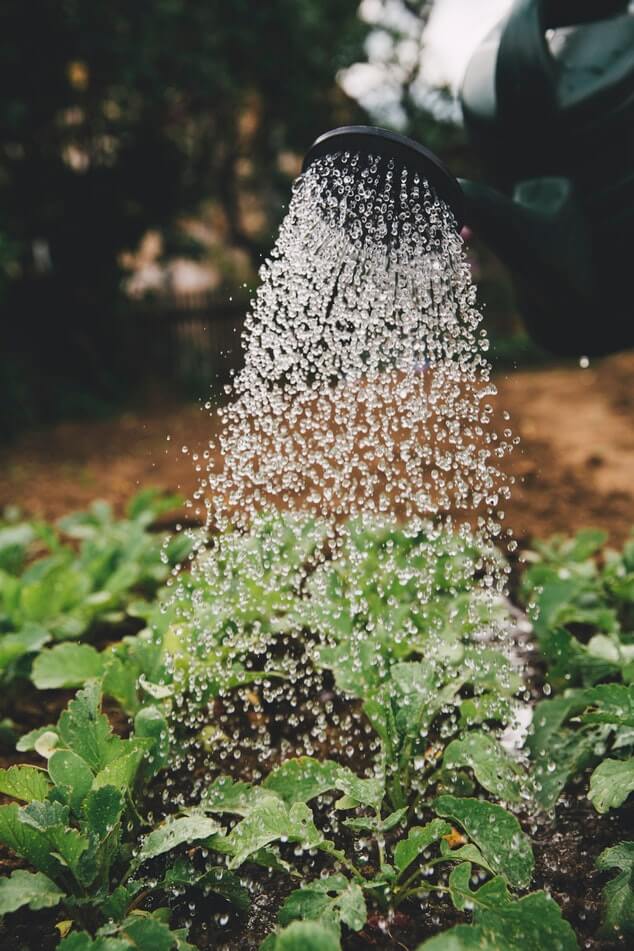
Regardless of the type of garden you have caring for vegetables will be relatively the same.
When caring for your vegetable garden you will want to do the following:
Water your plants at least weekly
You will want to water your plants at least weekly.
Most of the time you will actually have to water them 2 to 3 times a week. Vegetables in pots tend to dry the quickest. Rain Garden Beds will dry slightly slower. And traditional gardens require the least amount of watering.
The best way to tell if your plants need water is if the soil is a light brown or dusty color. If it is a dark color and your plants look healthy then no need to water.
Also, you will only want to water in the morning or evening.
The reason for this is because of evaporation.
If you water your plants in the middle of the day they will absorb only a percentage of the water. In addition, watering during the middle of the day can “scorch” your plants causing them to die.
Keep your garden weed-free
If you have your vegetable in pots or a raised garden bed you can ignore this step. In a traditional garden, you will want to weed your garden consistently.
To prevent weeds in your traditional garden I recommend applying a weed controller immediately after planting.
Personally, I use Preen Weed Control.
If weeds come during the gardening season, you will want to them (literally with your hands or a hand shovel) as soon as they appear.
The reason for this is simple. Weeds spread quickly.
In addition, weeds will absorb valuable nutrients and water that your vegetables need to grow.
To Fertilize or Not to Fertilize?
To fertlize or not to fertilize, that is the question!
Honestly, it doesn’t matter.
I’ve spent years where I fertilize and I’ve spent years where I haven’t. To be perfectly honest I haven’t noticed a huge difference in my harvest yield.
In you do decide to have an ongoing fertilizer program then just follow the instructions on your package.
Step-by-Step Guide to Harvesting
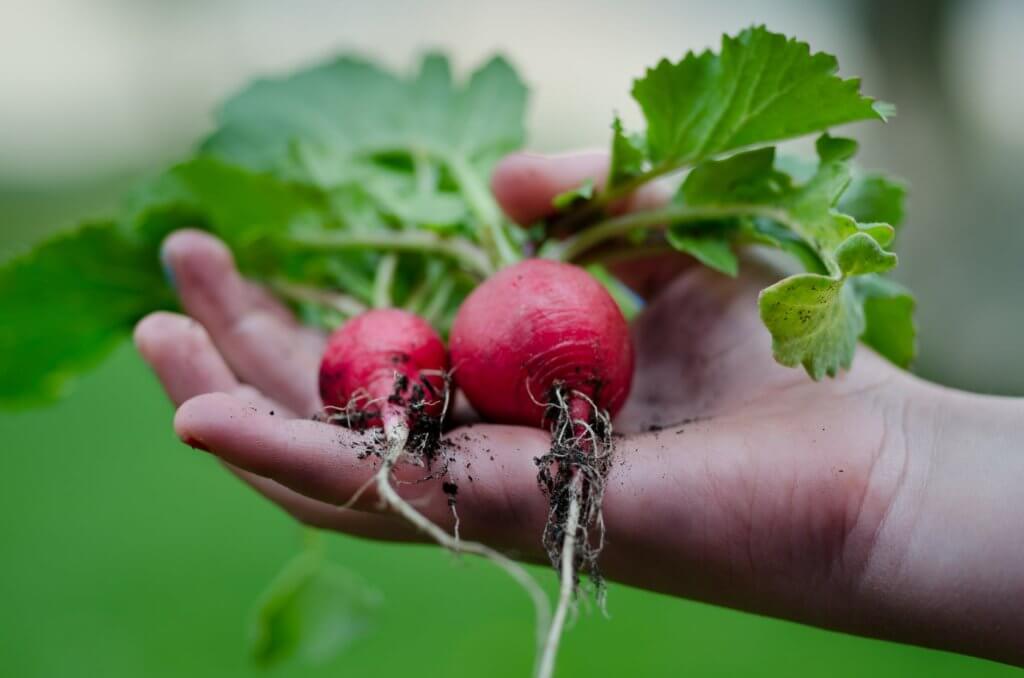
Regardless of your garden type, you will harvest your vegetables the same way.
Typically, I recommend harvesting early and often.
When your vegetable looks ripe then harvest it.
Harvesting will encourage more fruit growth. This will also prevent disease and insects from destroying your yield.
There is no science to harvesting. Literally, trust your eye and gut.
And if you don’t want to harvest early and often then there is one proven way to know when to harvest.
When the stem that connects directly to your vegetable turns a color other than green it is time to harvest it.
BONUS – Advanced Gardening Tips
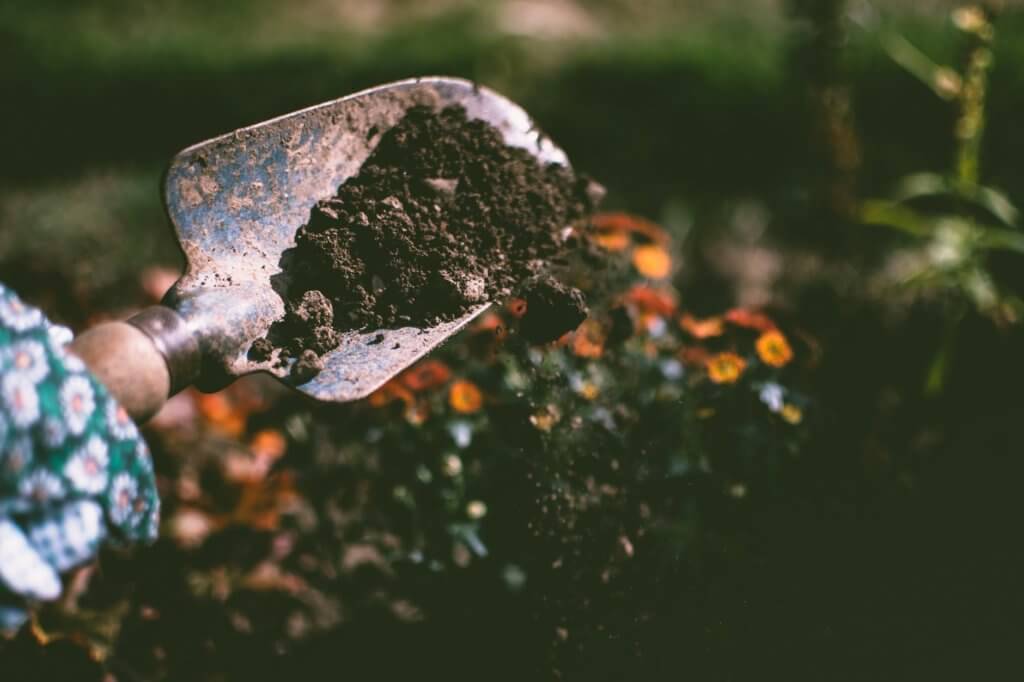
If you are looking to take your gardening to the next level then I have a few tips that can help you produce more, bigger, and better-tasting vegetables.
- Test your soil before gardening – This is the best way to have a better understanding of what nutrients need to be added to your soil to help produce the best vegetables possible
- Use a pH meter consistently – As the year goes on you may need to add additional nutrients to help your plants grow bigger and better.
- Cultivate your traditional garden soil several times before planting. Do this in the spring and fall!
- Add compost to your soil and then cultivate. This will add organic nutrients into your garden.
- Replace potting soil yearly. This can help reduce to spread of disease. This will also replenish nutrients in the pots.
- Add 1 inch of new raised garden bed soil yearly. This will help replenish nutrients that have been lost from the previous year.
- Do not plant all the same vegetables next to each other. This will help prevent the spread of disease or infestation of pests.
- Rotate your crops yearly. This will help reduce the number of nutrients being depleted from one specific area.
- Dispose of all plants at the end of the gardening season. This will help prevent disease
- Plant winter wheat. This will add nutrients into your soil. It will also reduce the number of weeds that appear in the spring.
Conclusion
As you can tell by this article, starting a vegetable garden does not have to be rocket science.
Whether you live on a property that has lots of acres of land or in an apartment with a small deck there is a garden technique for you.
Even if you have no gardening experience, you should now be able to do the following:
- Understand what garden is best suited for you based on the size of your land and the amount of work you want to do
- Have a general idea of what vegetables are best suited for your garden based on spacing, depth, and sunlight the garden will receive
- SIMPLE Steps for planting, caring, and harvesting your garden
- Advanced tips if you want bigger, better, and tastier vegetables
If you are enjoyed this article then I highly recommend reading: